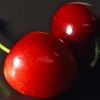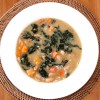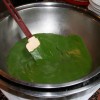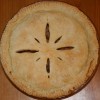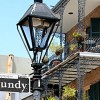Two years ago, after running a large catering business in Newport Beach, Calif., for 18 years, Craig Oremus was ready for a change. When he was offered a teaching job at Le Cordon Bleu College of Culinary Arts in Cambridge, he and his business partner and wife, Kathie Oremus, decided to close shop, move to Cohasset, and go for it.
Oremus has been teaching now for about 18 months. The school, which is affiliated with the Cordon Bleu in Paris where Julia Child studied, opened in April 2008. It offers a 21-month course for an associate’s degree in culinary arts – the same degree Oremus earned at Johnson & Wales University in 1979.
Following are edited excerpts of a conversation I recently had with the chef/educator at his home.
JW: How’d you make the transition from running a business with an annual revenue of $3-plus million to teaching? Was it hard?
CO: I’m a behind-the-scenes guy — don’t do well in front of crowds — so I didn’t know if I could do it. I’m logistics, operations, details: I’ll get four trucks to four weddings in a day with 50 people in place with time to spare so the weddings go off flawlessly. So, yeah, I was afraid to teach. But I realized that in the catering business, hundreds of people had passed through my kitchen and I’d taught them all. I’ve always taught. All I know is food, and it’s natural for me to talk about what I do, so teaching just flows. It’s given me a new passion, a new life. I was so done [with catering], then to go in there and work with the kids, with the other chefs, it’s just a blast.
JW: What’s the school like?
CO: They gutted the old Athenaeum Press building in Cambridge and did a $20 million renovation. It’s all state-of-the-art — just gorgeous. There are hallways with kitchens on each side. The first floor has the school’s restaurant, Technique, which is run by the students.
JW: What do you teach?
CO: I’m teaching Foundations I now, which I love, and I’ve taught Foundations II and American Regional. Foundations I is the first course the kids take. It used to be called Skills I. It’s a six-week block, five days a week.
We teach you conversions, measures and weights, history, French terminology, knife skills, different types of cuts, names of cuts, stocks, the mother sauces, the smaller sauces made from the mother sauces. And reductions. It’s mostly lecture and demo, but we get them doing their basic knife cuts, too.
JW: Is the basic curriculum still based on the classical Escoffier? It’s so amazing that one man born more than 150 years ago created such an enormous body of work.
CO: That’s the history. Escoffier is The Man. You learn classical technique and modernization of what was done. You learn the old roux, or thickening agents, but now reductions are used more, so we teach them, too. And we keep it a little fresher, intensifying flavors — use fresher herbs, make lighter sauces — but still, all the old standards are taught. We teach you the way it was but also show you little spin-offs on the mother sauces.
JW: What are the mother sauces and what does the term imply?
CO: They are veloute, béchamel, hollandaise, espagnol — or brown sauce — and tomato. They’re the foundation sauces that are used to make other sauces. Béchamel, or white cream sauce, for instance, can be made into a mornay. Veloute can be made into a sauce supreme. From brown sauce, or espagnol, you can make a Madeira, Marsala, a Bordelaise.
JW: What do the students take after Foundations I?
CO: Foundations II, which is when they start cooking in every class. There are long rows of ranges down the center of all the teaching kitchens. I’ll demo a couple of portions, and then they’ll do it.
We concentrate on a different cookery every week. We’ll do stocks one week, sauces another, a week on vegetable cookery, a week on grain cookery — potatoes and pasta. Then, in Foundations III, we put it all together and produce whole meals.
JW: Then what do they study?
CO: It’s a little different, depending, but basically, they go on to Intro to Baking, Intro to Garde Manger, Advanced Baking, Advanced Garde Manger, Meat and Seafood I.D., American regional — which includes New England, the Pacific Northwest, the South, the Midwest, and the Central Plains — and International cuisine. They do an externship near the end, working in a restaurant or hotel, and finish their degree by working the school’s restaurant, Technique, both front and back of house.
JW: What is Garde Manger?
CO: It’s all your cold hor d’oeuvres, appetizers, terrines, pates, mousses, dressings, garnishes. The chef teaching advanced garde manger is a scientist, he’s fabulous, he’s making Brie, ricotta, prosciutto, sopressata.
JW: Do you teach Fundamentals II with a larger picture in mind, or is it too early in the curriculum for that?
CO: You’re always thinking about what you can do with what you’re making, what it’s going to go with. If you’re making polenta, what am I serving with this? How thick do I want the polenta? Will I put a piece of osso buco on it, a lamb shank on it, or keep it more delicate. You have to think of the end result before you even start the process of cooking. You have to taste the end result before you start.
JW: Darn, I forgot what I wanted to ask you next.
CO: You’ll think of it. Do you want a cookie?
JW: No, thanks.
CO: A meatball?
JW: No, thanks!

